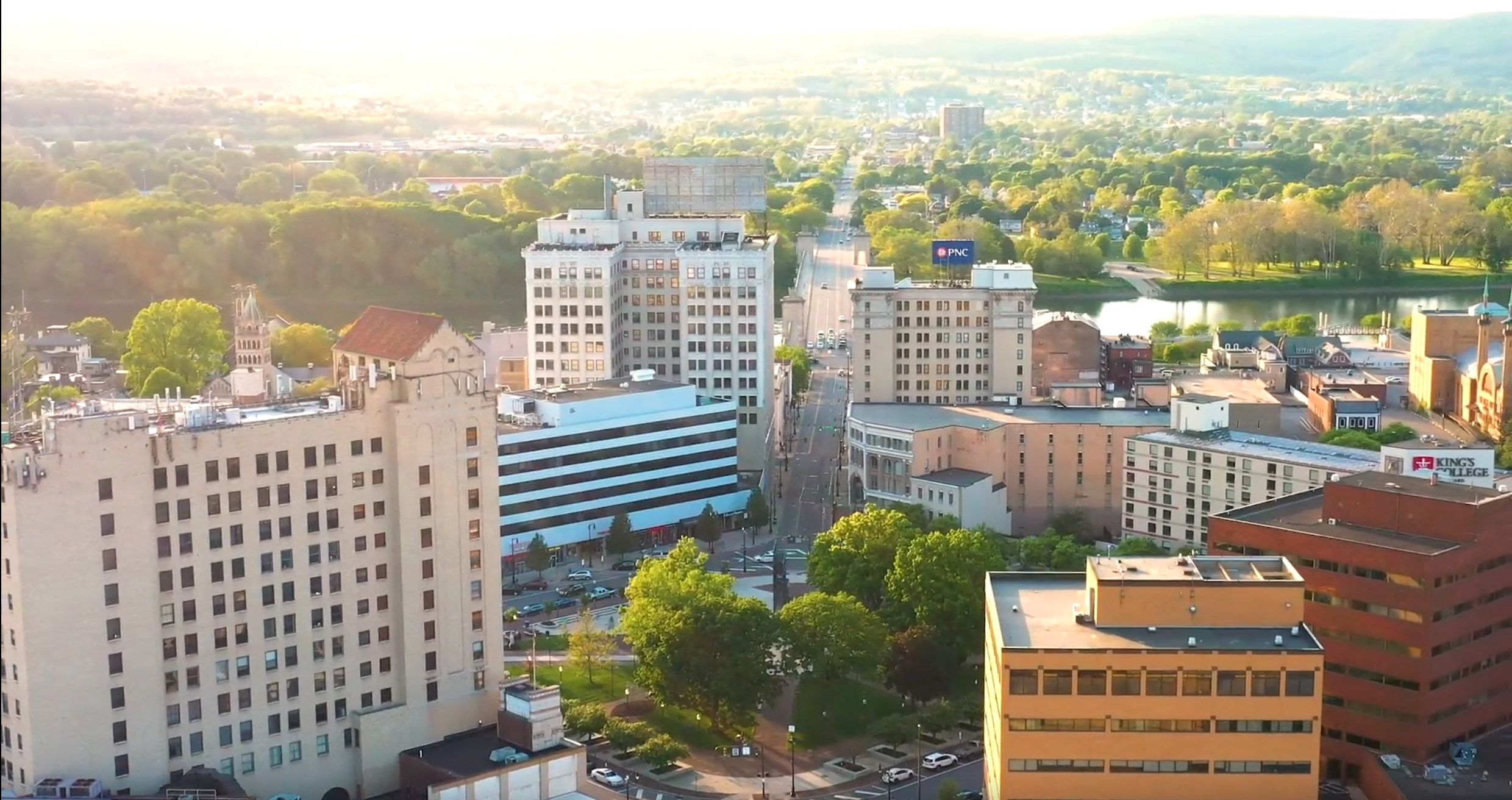
Welcome to Wilkes-Barre.
Opportunity’s here.
The City of Wilkes-Barre was built by hard-working immigrants.
Today, we honor the legacy of our ancestors while welcoming new residents.
We recognize that our city’s heritage, economic innovation, recreation and education make it a place of opportunity.
Opportunity is in our schools, our offices, and in our community.
Wilkes-Barre has room for culture, business, education, families, adventure, and room for you.
Explore our Heritage and opportunities for Innovation, Recreation, and Education below:
HERITAGE
Wilkes-Barre was settled in 1769, formally incorporated as a borough in 1806, and as a city in 1869.
Centrally located in the Northeastern Pennsylvania’s Wyoming Valley, the City of Wilkes-Barre has witnessed many of the key points in American History. Thousands of years of habitation by Native American tribes predated the 18th century European settlement of the Wyoming Valley. In the late 18th century, battles over land raged during the Pennamite-Yankee War, which culminated with The Battle of Wyoming on July 3, 1778. during The American Revolution.
Wilkes-Barre was named in honor of two British members of Parliament, John Wilkes and Issacs Barré, who supported the American cause during the Revolutionary War.
Wilkes-Barre reached the height of its prosperity in the 19th century when anthracite coal reserves were discovered nearby. This discovery led to the city being nicknamed “The Diamond City”. The Wyoming Valley held the largest anthracite coal field in the United States at the time. With the arrival of hundreds of thousands of immigrants, the city’s economy flourished due to new resources and an expanding workforce.
During Wilkes-Barre’s reign as an industrial and economic force, in the early 20th century, a number of franchises planted their roots in the city, such as Bell Telephone, HBO, Planters Peanuts, and Stegmaier. Industrialization slowed after World War II and Wilkes-Barre was inundated by flooding of the Susquehanna River, a result of Tropical Storm Agnes in June 1972. 50 years later, the City is protected from flooding by a levee system that has been successful in preventing threatening floods in 1996, 2004, 2006, and 2011.
Wilkes-Barre has a population of nearly 50,000 people and is the largest city in Luzerne County.
It is the second largest city, after Scranton, in the Scranton/Wilkes-Barre/Hazleton Metropolitan Statistical Area.
Wilkes-Barre sits at the center of the MSA and is its largest submarket, with a population of more than 260,000 in the Wilkes-Barre primary trade area.
Today, Wilkes-Barre is in a period of revitalization, spurred by investment by large and small businesses, economic development, and community-focused services provided by non-profit organizations, and a continuous workforce stream from local higher education institutions.
Learn more about Wilkes-Barre City’s heritage
by visiting:
INNOVATION
The City of Wilkes-Barre is proud to partner with the community’s economic development organizations to highlight the opportunities Wilkes-Barre can provide for new and existing businesses, including local, “mom & pop” shops and multi-national businesses.
We have a diverse, skilled workforce and an economy that offers family-friendly, affordable living.
Wilkes-Barre is barely a 2-hour drive north of New York City and Philadelphia and 4-hour drive away from both Boston and Washington, D.C.
Wilkes-Barre has quick access to Interstates 80 and 81 and the Pennsylvania Turnpike—Northeast Extension.
To learn more about doing business in the City of Wilkes-Barre, visit the City's official business webpage.
Wilkes-Barre City has room for your business to grow. Opportunity’s here.
Learn more about economic innovation in Wilkes-Barre City
by visiting:
RECREATION
The City of Wilkes-Barre is located along the 444-mile-long Susquehanna River, one of the largest rivers on the Eastern Seaboard. Locals and visitors enjoy kayaking and fishing on the river and the River Common hosts family-friendly events like concerts and annual Dragon Boat Races.
Wilkes-Barre’s 52-acre Kirby Park is located along the Susquehanna River and its amenities include tennis courts, a fitness trail, pond, walking paths, running track, softball fields, volleyball courts, three pavilions, ADA-accessible walkways, and a Special Needs Playground, opened in October 2022. Wilkes-Barre’s Annual Cherry Blossom Festival, Old Fashioned 4th of July Celebration, and countless community events are hosted in Kirby Park.
Public Square, in the heart of Wilkes-Barre’s Downtown Business District hosts the annual St. Patrick’s Day Parade, weekly Farmers Market on Thursdays from June through November, Halloween Trick-or-Treating, an annual Christmas Parade and Tree Lighting Ceremony, and an ice-skating rink, during winter months.
Wilkes-Barre City has room for adventure. Opportunity’s here.
Learn more about recreation in Wilkes-Barre City by visiting:
EDUCATION
The City of Wilkes-Barre is home to public, private, and faith-based elementary, middle, and high schools and numerous Early Childhood Education centers. The Wilkes-Barre Area School District has 5 elementary and middle schools located in Wilkes-Barre City.
King’s College and Wilkes University’s campuses and Luzerne County Community College—Wilkes-Barre Center are located in Downtown Wilkes-Barre.
The colleges’ population total over 11,500 undergrade and graduate students.
Wilkes-Barre City has room for students and families to grow. Opportunity’s here.













